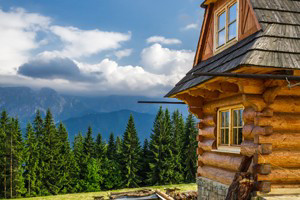- 1200 AD – 1800's the Ute Indians called the Uncompahgre Valley home.
- 1800's: Trappers, traders, miners, and opportunists moved into the area.
- 1882: Montrose became an incorporated town.
- 1909: The Gunnison Tunnel brought irrigation water to Montrose.
- Today, Montrose is thriving as a outdoor recreational hot spot.
Ute Indians
The history of Montrose, CO is as colorful and changing as a spinning kaleidoscope. For over 10,000 years, the Uncompahgre Valley has been inhabited. First, by the Paleo-Indians, the first people who entered and inhabited the American continent. But, it is the Ute Indians that called southwestern Colorado home when the Spanish explorers arrived. They would migrate from the mountains in summer to the valley in the winter.
The Ute Indians inhabited the Uncompahgre Valley for over a 1,000 years. Yet, as settlers poured into the valley, conflict arose and shortly there after the Ute Indians were relocated to a reservation in Utah.
Trappers and Traders
Trappers and traders didn't enter the valley until the 1800's. They settled at what they called Fort Uncompahgre, found at the confluence of the Gunnison and Uncompahgre Rivers, just a short distance from present day Montrose.
They traded and prospered without much major conflict until the Ute's attacked the Fort and killed everyone. Everyone included the mostly Mexican workers hired to watch the pelts and other traded goods. A dispute in New Mexico, between the Utes and the Mexicans led to the altercation. This set the settlers at ease, because it was not a direct attack aimed at them.
Incorporated City of Montrose
A bad economy, the Homestead Act of 1862, and the gold and silver rush created an influx of people into the area. For centuries, the area that is present day Montrose was used as a hub of trade due to its ideal location. Therefor it was no surprise that the township was used as a supply hub for the mines. Once those began to slow production and eventually shut down, the area began to focus more on agriculture.
Even though the area was heavily settled, land could not be purchased until the Indians were removed. In 1881, after an altercation in northwestern Colorado that left eleven settlers dead, an order from Washington came down for all Ute Indians to be moved to reservations in Utah. Shortly after that in 1882, Montrose became incorporated. The town name is credited to town founder, Joseph Selig who named it after Sir Walter Scott's novel “Legend of Montrose.”
With all avenues to settlement open, more people continued to move into the valley. Roads were built to supply goods to the miners, trees were hauled away in mass by lumber companies, wildlife was over hunted, and what little fertility the soil had was quickly lost due to mismanagement. Things weren't looking good for this once beautiful and fertile land.
Things started to turn around in 1905 when the Uncompahgre National Forest was established to manage and protect resources. In addition, in 1909 the Gunnison Tunnel was completed, thus bringing irrigation water from the Gunnison River into the Uncompahgre Valley. With this, the semi-arid valley transformed into the agricultural hub of southwestern Colorado.
Today
Wildlife started to recover around the 1930's and the city has continued to grow. Its pristine location is now used for easy access to recreational hotspots. Today, Montrose is a home-base for outdoor adventurers. Five national forests, the Black Canyon of the Gunnison National Park, three ski areas, and hundreds of acres of multi-use land draw hunters, anglers, bikers, hikers, and tourists to the area every year.
